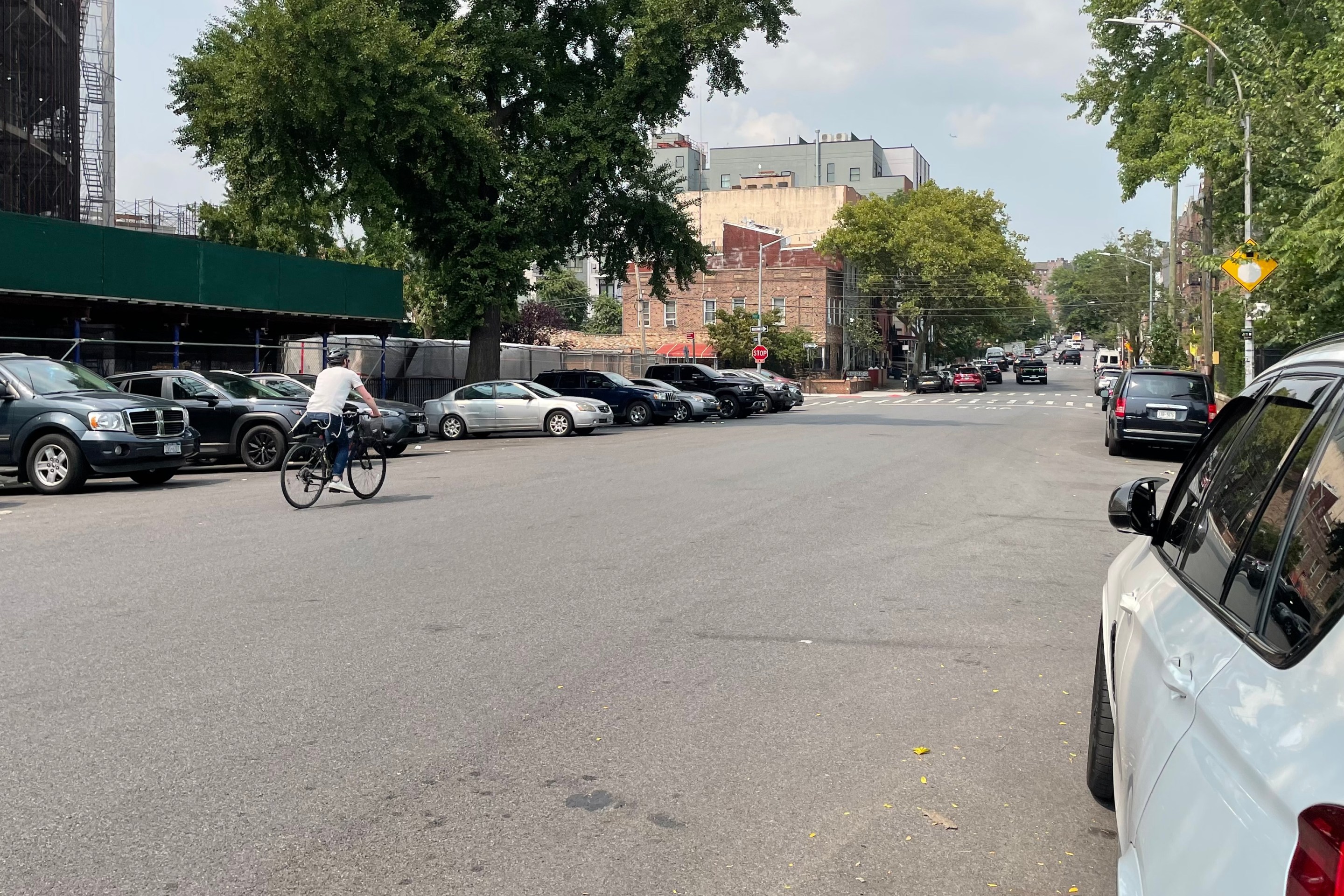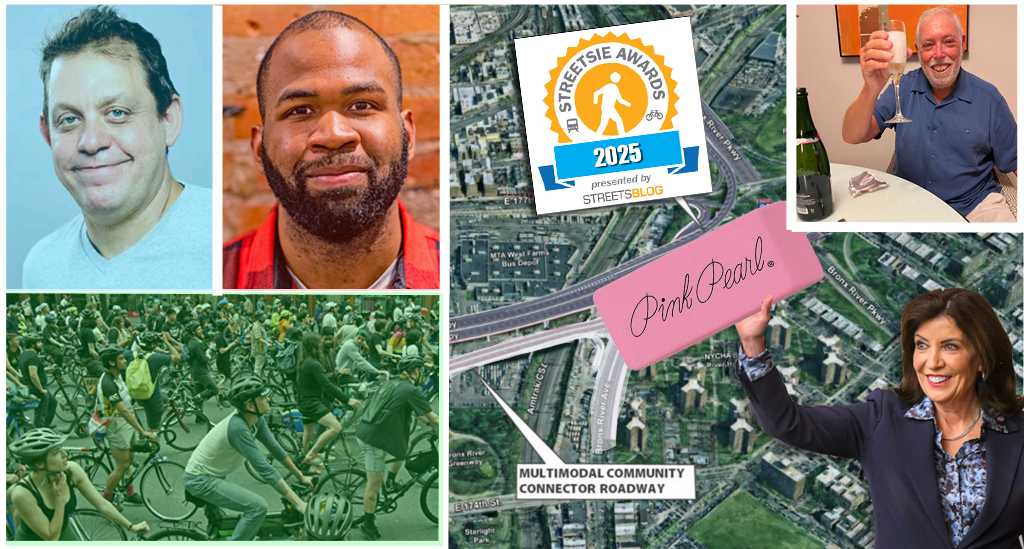
Vision Zero is about more than looking both ways.
The following article, "Ending the Body Count," appears in the upcoming fall edition of Transportation Alternatives' Reclaim Magazine.
Last year, I wrote a letter to the NYC Department of Transportation asking for traffic calming on 65th Street near my home in Bensonhurst, Brooklyn. Several elderly pedestrians had been struck and killed by cars nearby. This is a street where I grew up and where my parents still live. A traffic employee was sent to monitor the speeds of passing vehicles, and I received a letter shortly afterward stating that careful analysis had led to the conclusion that no calming measure was justified. This seemed perverse. How many dead or tragically injured bodies does it take to put in a speed bump, neck down or stop sign on a street? Isn’t one enough?
New York could use some lessons on Swedish transportation ethics. Eleven years ago, the Swedish Parliament passed a bold transportation bill based on a road safety philosophy called Vision Zero. The road transport system in Sweden is already one of the safest in the world, but even the low number of fatalities is viewed as unacceptable. Based on a zero tolerance attitude, Sweden has strategized to eliminate all fatalities and serious injuries on its road transport system by 2020.
Vision Zero is founded on the ethical premise that society can never exchange life or health for other benefits. Under the current transportation paradigm in New York, human life and health is traded for mobility, economics and other factors. An optimally designed road system should not lead to death or life-long physical impairment. Streets are engineered so as to make traffic fatalities impossible, most often through designing lower speeds into the roadbed. Better sight lines, traffic calming and public education all play their part in eliminating fatalities, and ensuring that the remaining crashes don’t result in serious injury.
The origins of Vision Zero and the zero tolerance mantra can be traced back 100 years to industrial safety standards and the chemical industry. Workers were protected under zero tolerance from noxious chemicals, heavy injury or risk of death. It wasn’t easy, but laws eventually forbade industry from placing profit and expediency above the lives and safety of workers.
The road transport system needs safer engineering and needs to be more forgiving of human error. The Stockholm Environment Institute, an independent research center focused on sustainable development, argues that the road environment should not deliver a death penalty if someone makes a mistake. Streets must allow for human error without it leading to serious injury.
When a car in New York jumps a curb or makes a right turn that results in the injury of a pedestrian, it is usually reported as an accident, alluding to the unexpectedness of the event. Streets where cars can drive at speeds of 30+ mph are bound to have a crash at some point according to the laws of probability. Low speed limits, separated bike lanes and well-designed shared spaces are sample infrastructure changes that can help reach a Vision Zero performance target. When it comes to road safety, crashes should be viewed as mistakes in street design rather than unavoidable accidents.
More than 250 New Yorkers are killed in automobile-related crashes every year, and it’s not unusual for City officials to tout these historically low numbers as evidence that they are doing their jobs well, as if exchanging 250 lives is a reasonable trade for mobility. Only in transportation is this somehow acceptable. This past spring, two construction cranes toppled over in separate incidents, killing six people and injuring several others. This prompted the Department of Buildings to declare war on falling cranes. Clearly, objects crashing down on city streets are a serious hazard to people, legitimizing such a hard stance. Automobiles moving at high speeds are the horizontal counterparts of falling cranes and building debris.
Sweden has seen a steady decline in crash fatalities in the ten years since making Vision Zero the cornerstone of its road safety plan. The success is influencing several other countries such as Austria, Switzerland, Britain, The Netherlands and Germany to consider the policy. A dense urban locality has yet to implement Vision Zero without a federal directive, and New York would be an ideal testing ground. All that is required is a shift from the current policy of crash reduction to the elimination of death and serious injury. A civilized society should not treat crash victims as collateral damage.
Michael Kodransky is an urban planner at the Institute for Transportation and Development Policy – Europe, which is based in Germany.
Photo: wallyg/Flickr





